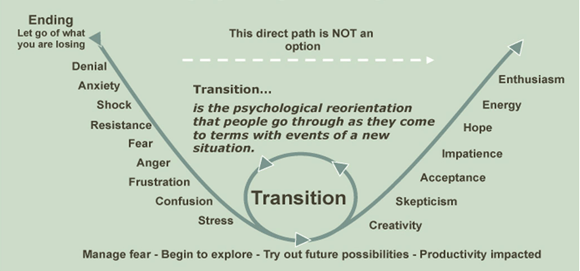3 tips for communicators to handle constant change
Here’s how to help employees cope amid constant change. Insights courtesy of Diana Peltier, who’ll share more in our March 9 “New Change Communications Strategies for 2021” workshop.

Feeling overwhelmed? Struggling to keep up with constant change? You’re not alone.
“We’re all operating in a VUCA world now, including your employees” says Diana Peltier, a change communications consultant with Ragan Consulting Group.
The acronym for “Volatility, Uncertainty, Complexity and Ambiguity” should be pretty familiar to you and your teams by now. What’s not is how to handle it. Here are a few ideas:
1. Recognize change is here to stay. “If we learned anything this year, it’s that change is unavoidable,” says Peltier, who will dig deeply into change theory during our March 9 “New Change Communications Strategies for 2021” workshop.
That’s the bad news.
“The good news is the more we understand change, the more able we are to navigate through it,” she says. “Uncertainty is a big part of what makes change debilitating—so the more you study it, the less power it has over you.”
2. Arm yourself against the “Amygdala Hijack.” Understanding how neuroscience drives our reactions to change helps demystify and defuse its power.
“Change is a threat because our brains need to be able to predict what comes next,” Peltier says. “Anything uncontrollable or unpredictable is highly stressful and seen as a threat. Threat translates to fear and triggers the ‘Amygdala Hijack,’ where we prepare for fight or flight and the ‘thinking’ part of the brain goes off line.”
Her advice: “Realize change is a journey anchored in emotions.”
“It’s not a straight line—it’s a curve,” she says. “We move from denial and anxiety to embracing what’s new with hope and enthusiasm. Knowing where we are in the process helps.”

3. Increase certainty and control. How can communicators help staff embrace change initiatives from return-to-office scenarios and even restructurings?
“Tailor messages based on where employees are in the journey,” Peltier says. “Those messages should help increase their certainty and sense of control.”
Here are several strategies for doing just that:
- Keep things simple and easy to understand.
- Be clear about objectives—what you’re doing and why.
- Tie to purpose whenever possible.
- Be reasonable about the “asks.”
- Set achievable, short-term goals.
- Make it easy for employees to act.
- Remember that visible acts are the most meaningful.
- Involve employees in the change.
- Provide forums for feedback and two-way dialog.
- Ask what’s working and what needs to be fixed.
Brian Pittman is the Dean of Ragan Training and a Ragan Communications event producer.






